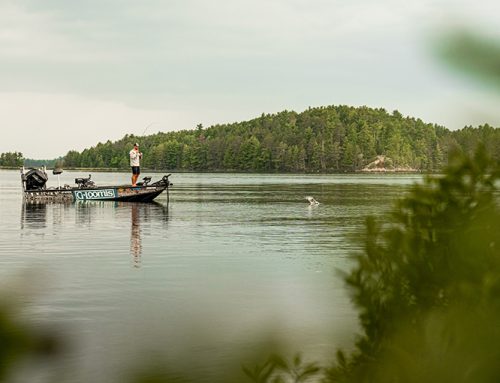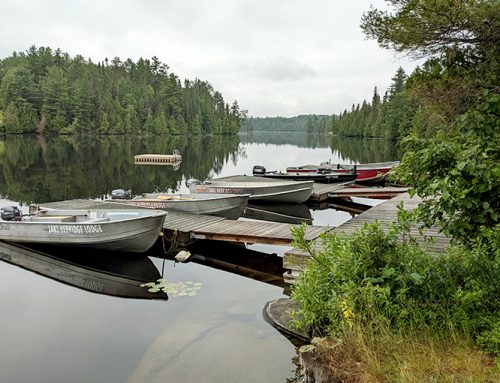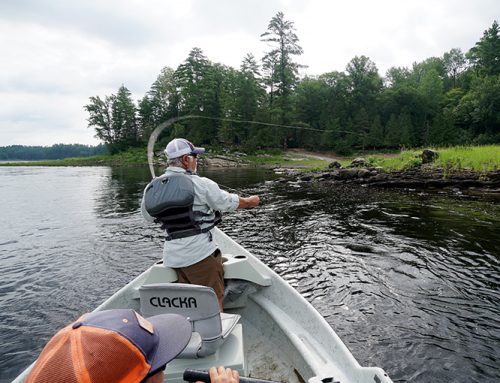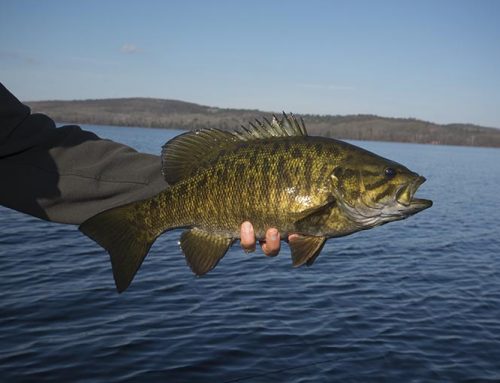
The bow of the canoe parts the small standing waves leading to a perceptible drop in the river. A few minutes ago we were on the bank scouting these rapids, but as we drop sharply into a churning mass of swifts, standing waves, and giant boulders, everything looks different.
“Forward, forward, forward!” Erin calls from the stern. “We need speed going into this.”
“Draw!” she yells at the appearance of a submerged boulder. I bury the blade of my paddle, drawing the canoe to the right as Erin swivels the stern around the obstruction. “Cross bow,” she calls, but I’ve anticipated the command, rotating to draw the canoe to the opposite side. “Good. Now forward. Power!”
I’m three days into a five-day trip with Missinaibi Headwaters Outfitters. I’ve joined the group of seven paddlers at the town of Mattice along Highway 11 several days into their trip. By the end of my first day, I know this is going to be an exceptional experience, not only because I’ll be travelling the fabled Missinaibi River, but because these strangers are quickly becoming friends, and the guides, with their exemplary cooking, camping, and paddling skills, make moving through the remote wilderness a distinct pleasure.
The cast of characters
Lead guide Erin Pehar holds us steady in the relative calm of a large eddy while I pull out my camera. Next into the rapids are Charlie and Charlene. In flat-water sections, these two 50-something-yearolds chat incessantly, but in the midst of the whitewater, there are only brief, sharp bursts of communication. The pair choose an alternate route through the rocks and ledges, but emerge unscathed.
“Interesting line, Charlie,” says Erin smiling before glancing up at fellow guides Ceilidh and Ryan, who manipulate the heavily-laden 17-foot ABS canoe with precision.
The show continues with the stocky and powerful Joe and the diminutive Barbara displaying their growing paddling skills by adeptly manoeuvring around a large midriver boulder at the last moment.
Before this trip, only our guides had been acquainted with each other. The fact that we’re all moving through the woods and waters with increasing skill, efficiency, and enjoyment is a telling commentary. Missinaibi Headwaters Outfitters do not simply usher clients down the river, they teach the skills required to navigate a wilderness river.
Thunder house
Yesterday we put in a long day under the hot sun negotiating Black Feather Rapids, where Volkswagon-sized boulders stretch across a wide swath of river, before we assembled camp at Kettle Falls. Erin and Ceilidh set up the kitchen on an exposed rock where the river divides around four islands. We sat on a flat slab of warm granite, sipping wine, feeding the fire, and watching pizza cook in a reflector oven.
Today we’re paddling the shallow and narrow passages around Skunk, Isabel, and Alice islands. Late in the sunny afternoon, a tailwind fills in, hastening our push towards Thunder House Falls.
A large white-and-red sign identifies the portage trail, a response to the 1993 deaths of five paddlers after they were swept over Thunder House Falls. Unloading at the portage above inviting Class II rapids, it’s easy to understand how paddlers could be drawn past the series of navigable rapids to the point of no return above the falls.
I’m happy to be experiencing Thunder House from dry land. Dark waters are funnelled through a narrow canyon and over a series of 3- to 4-metre falls. It’s breathtaking from the boreal-capped ridge, but deadly from the water.
Conjuring up some fish
So far, our need to cover water has meant I’ve only been able to envision the piscatorial secrets sequestered in the Missinaibi’s waters. But, with a free evening, I appeal to Ryan to join me in some exploratory angling.
We launch below Thunder House and paddle upstream into the canyon. Steep walls of rock rise above foamlicked waters. We round a bend to see an angular rock pillar rising 25 metres. I recognize this from photographs as Conjuring House Rock. Not only is it a transition point between the Precambrian Shield and the James Bay Lowlands but a significant spiritual location for the Ojibway and Cree — and a powerful spot to catch my first smallmouth bass and walleye of the trip.
The next morning, after a portage around Stone Rapids, we work our way through a technical, Class I swift to the start of the longest portage of the trip. There’s a dogleg turn downstream where the river disappears into Hell’s Gate Canyon, an elongated crevice-like slit in the earth.
Bent under the weight of packs and canoes, we spend most of the afternoon making multiple trips along the mercifully flat trail. At an intersection near the end of the portage, Erin assembles a pile of the tastiest chickensalad wraps I’ve ever eaten and then points us towards a trail to a lookout. Here the canyon is so steep and narrow it’s impossible to see the river until we step out onto an earthen platform suspended above the canyon floor by the roots of trees that grip the soil. I don’t blame Charlie and Charlene for spending as little time as possible on the tenuous perch but Barbara and Joe feign relaxation on the hanging lookout for a few photos before we all head back to finish the portage.
At the end of Hells Gate Canyon, the river empties into a deep and swirling pool. While the others relax on the cobble shoreline, Ryan and I summon our reserves and clamber onto a point of angular rocks to work the pool. I manage to catch three walleye in three casts. Ryan soon enjoys similar results as we savour another taste of the Missinaibi’s angling potential, until the others have the canoes packed and ready to roll.
With the river now dropping about six metres every kilometre, it’s an exciting ride to our final destination at Bells Bay. Under the tutelage of guides Erin, Ceilidh, and Ryan, the confidence of our group has grown to the point where the final Class II rapids, complete with large standing waves, is negotiated with confidence and enthusiasm.
With our last campsite set on the shores of Bell’s Bay, Ryan and I return to fish. A floatplane will arrive in the morning with a fresh guide and new clients. Only fellow guest Joe and guide Ceilidh will continue downstream another 10 days to Moosonee. As Ryan and I pluck walleye from calm, shallow waters, I can’t help glancing downstream toward the remaining course of the mighty Missinaibi.
CONTACT INFO
Missinaibi Headwaters Outfitters
PO Box 1148, Chapleau, ON
P0M 1K0
(855) 226-6366
www.missinaibi.com
For more information on the Missinaibi River and other exciting paddling trips in Northern Ontario visit the Algoma Country website and the Outdoor Ontario website.
The photo in this article, by James Smedley, received 1st place in the Outdoor Writers of Canada National Communication Awards in the Photography category.






Leave A Comment